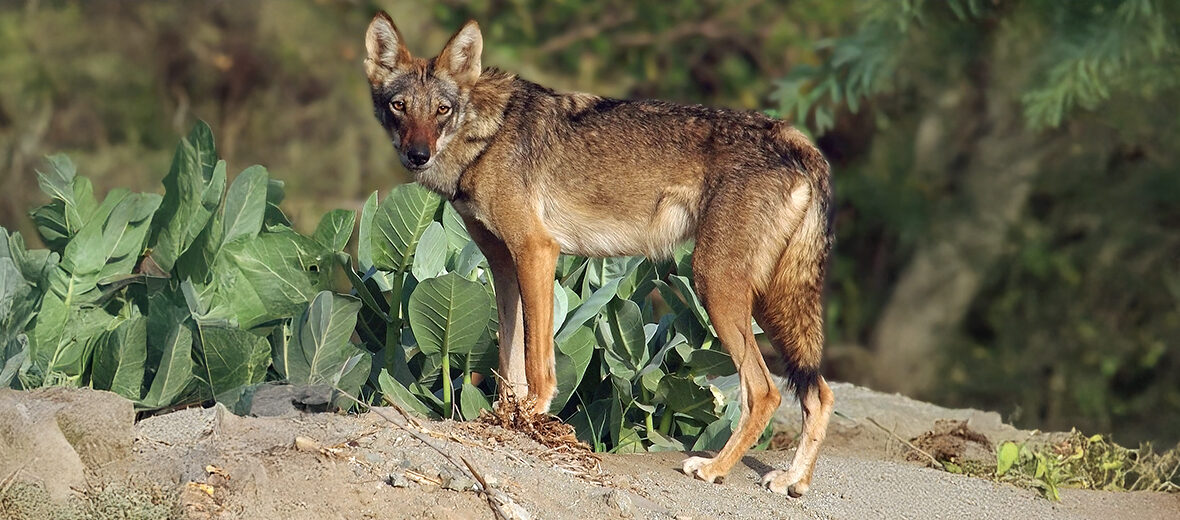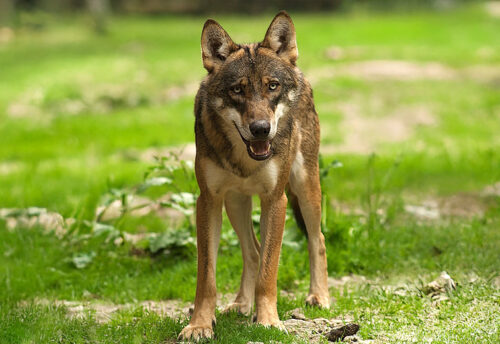
The Arabian wolf is a subspecies of the grey wolf. They are the smallest recognized subspecies of wolf. These canines hail from the Arabian Peninsula, to the west of Bahrain, as well as Oman, southern Saudi Arabia, and also Yemen. These critters face the threats of habitat loss and destruction at the hands of residential and commercial developments, as well as ranching; conflict with humans; and hybridization with domestic dogs. The IUCN lists these canids as Vulnerable, but it has been suggested that they be moved to Endangered. Their population trend is shown as decreasing.
First the Stats…
Scientific name: Canis lupus arabs
Weight: Up to 45 lbs.
Length: Up to 63 inches, including the tail
Height: Up to 26 inches
Lifespan: Up to 12 years
Now on to the Facts!
1.) They were first described by British zoologist Reginald Innes Pocock in 1934.
2.) These wolves are also found in Israel’s Negev and Arava Deserts, Jordan, Palestine, and Egypt’s Sinai Peninsula.
3.) Arabian wolves are a specialized xerocole (adapted to arid environments) animal that normally dwells in smaller familial packs.
4.) Insects, reptiles, birds, rats, mice, small ungulates, like young Nubian ibex, numerous species of gazelles, cats, fish, snails, baby baboons, sweet fruits, and carrion (dead animals) are all on the menu.
5.) There is a concern of extinction by hybridization seeing as Arabian wolves are more adapted to desert life than dog/wolf hybrids.
But wait, there’s more on the Arabian wolf!
6.) These wolves play a prominent role in certain African cultures; they were considered sacred in ancient Egypt, primarily in Lycopolis, where they were revered as a god.
7.) They hunt in pairs or in small packs of up to 4 individuals.
Did you know…?
Due to the fact that these wolves can attack and eat any domestic animals ranging up to the size of goats, pastoral Bedouins and other farmers will often times, sadly, shoot, poison, or trap them.
8.) While more prone to being nocturnal (active at night), these wolves can sometimes exhibit crepuscular (active at dawn and dusk), as well as mid-afternoon activity.
9.) There is at least 1 documented case in Israel of a striped hyena associating and cooperating with a pack of these wolves. This is a case of mutualism: the hyena benefited from the wolves’ superior ability to hunt large, quick prey, and the wolves benefited from the hyena’s incredible sense of smell, to locate and dig out tortoises, crack open large bones, and to tear open discarded food containers like cans of food.
10.) As is the case with other wolf subspecies, Arabian wolves can promote a trophic cascade (series of effects that predators trigger by controlling their prey, which then impacts other species) by suppressing smaller carnivores like golden jackals and foxes. This allows smaller herbivores to become more prevalent.
But wait, there’s still more on the Arabian wolf!
11.) These critters often compete with other carnivores like the caracal and Arabian leopard.
12.) They are fiercely protected under Israel’s 1955 Wildlife Protection Law.
Did you know…?
Humans are, by far, their greatest predator, killing out of revenge and persecution, for the taking of their domesticated animals.
13.) Females undergo up to a 68 day gestation (pregnancy) that yields up to 3+ pups.
14.) Breeding season lasts from October – December.
15.) Arabian leopards, caracals, and hyenas are all suspected predators of Arabian wolves.
Now a Short Arabian Wolf Video!
Be sure to share & comment below! Also, check out the Critter Science YouTube channel. Videos added regularly!

Want to suggest a critter for me to write about? Let me know here.
Some source material acquired from: Wikipedia & IUCN
Photo credit: Ahmad Qarmish12



